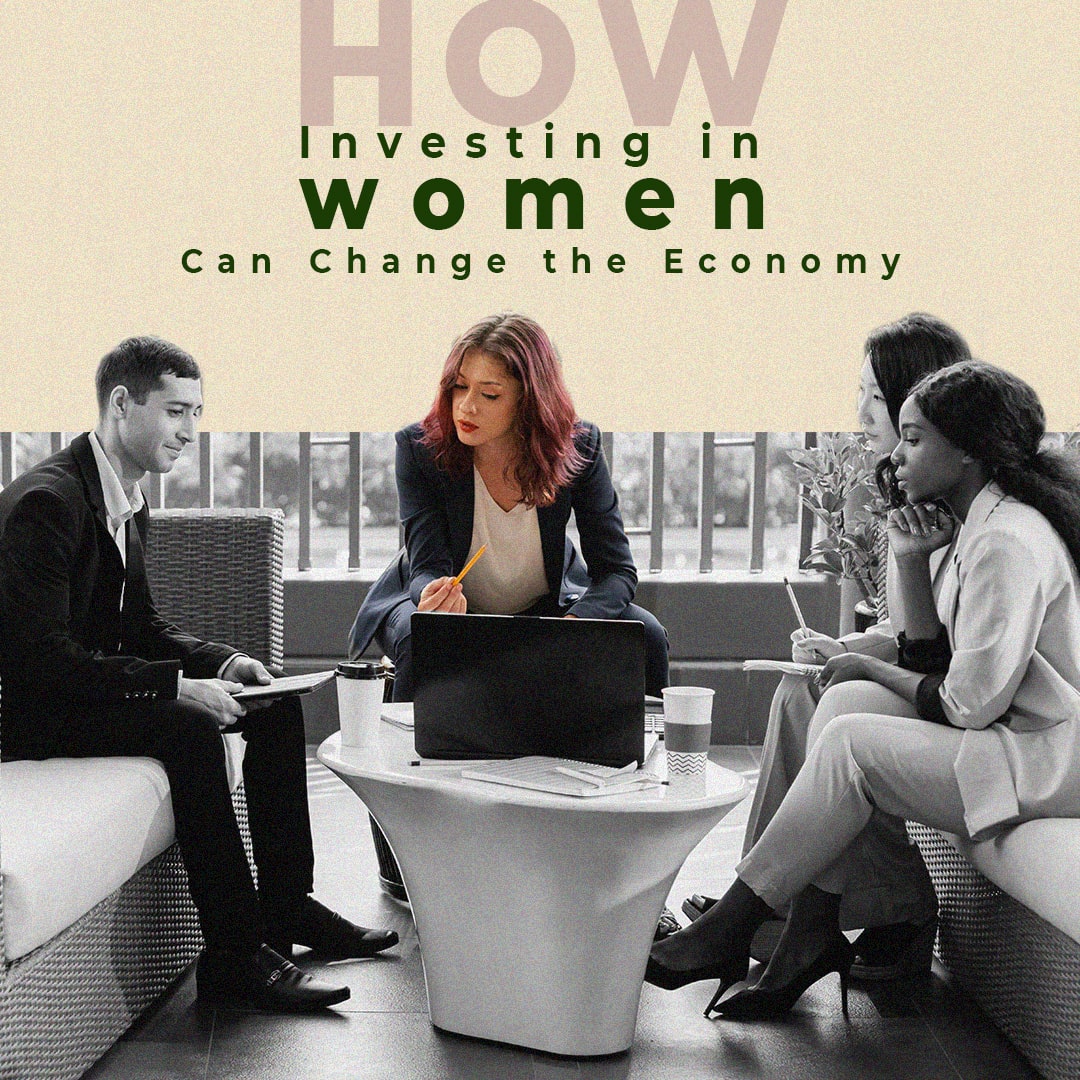Overview
- Women make up 48% of India’s total population but only 9% of the workforce post-pandemic.
- A well-paying job is the ticket to independence and self-sufficiency for women in India.
- Investing in women can lead to overall economic growth.
- One effective way to support the development of female professionals is Gender Lens Investing.
For women in India, a steady, well-paying job is the ticket to independence and self-sufficiency. However, gender bias, cultural roles, and, most recently, the pandemic hinder their participation and growth in the workforce.
Women make up 48% of India’s total population but only 9% of the workforce post-pandemic. Among the BRICS nations with major emerging economies (Brazil, Russia, India, China, and South Africa), India has the lowest female labor participation rate.
While the pandemic forced closures and caused many women to focus on their responsibilities as primary caregivers, the number of working women has been declining since 2010. According to the World Bank, the number of working women in India dropped from 26% to 19% between 2010 and 2020. This trend has economists concerned that India may fall even further behind in economic growth and the global market.
While three main factors keep women out of the workplace, a significant solution lies in investing in initiatives and training that can provide exciting opportunities to expand not only the female workforce but benefit both men and women, and ultimately position India as a stronger competitor in the global market.

Three Factors Keeping Women Out of the Workplace
- Culturally, women have assumed most of the duties surrounding care for the home and family members. An ILO study suggests that more than 95% of working women in India are informal workers earning far less than men in menial work that is often dangerous, seasonal, or not protected by equal pay provisions.
- Family dynamics are also a factor. Many young women are still discouraged from striking out on their own, moving away from family, and delaying or not following the traditional marriage path. Many families still feel the best option for a girl is to wed at an “appropriate” age (18 to 24 years old), which perpetuates the cycle of low education and poverty. Working mothers face non-existent maternity benefits and lack reliable and affordable childcare. This prevents many from returning to work after childbirth. While European countries have become leaders in maternity and family leave benefits, such programs are lacking in India even for women in the organized sector.
- In the professional workplace, gender bias and pay gaps are still considerable obstacles even in the most progressive organizations. Women in management and leadership positions are significantly underrepresented. In some organizations, women in leadership are viewed more as a novelty than a sound business practice. Many continue to hold to the stereotype that women lead with emotion, rather than logic, with only 17% of men surveyed by Resume Lab in 2021 saying they trust a woman more than a man to lead a company.
Though much needed, undoing gender bias and stereotyping is not the only catalyst to erasing the disparity in opportunities and pay for women in India.
Investing in Women Can Lead to Overall Economic Growth
Bloomberg Economics estimates that improvements in the employment gap between men and women could boost India’s GDP by nearly a third by 2050, amounting to nearly US$6 trillion. One effective way to support the development of female professionals is Gender Lens Investing.
Gender Lens Investing has taken hold over the past decade as organizations and individuals seek investment opportunities that specifically promote gender equity. The extension of these investments can increase the talent pool, increase diversity in the workforce, and by empowering women financially, turn them into investors as well.
Women can benefit through investments in:
- Funds that provide investment, training, and mentorship to women.
- Businesses owned or led by women.
- Businesses that promote workplace equity and diversity.
- Companies that improve the lives of women and girls through their products or services.

Resources such as accessibility to investment, training, and mentorship are concrete means that can positively impact career and business opportunities. Indian women desire to raise their status and standard of living, which includes a seat in the boardroom. At the same time, some women are choosing the entrepreneurial route by starting small operations in fields such as agriculture or handicrafts. And, while education for the emerging population is focused on STEM programs, a vast age group is eager for entrepreneurial opportunities and more formal recognition of their varied skill sets.
There are some bright spots in this scenario. For example, India leads the world with 15% of women airline pilots compared to the global average of less than 5%. Also, half of India’s banking assets were under institutions headed by women. But the gap between these elite few and the rest of the population is staggering.
Foundational Education Opportunities for Girls
The COVID-19 pandemic forced primary and secondary schools across the continent to close for months. While institutions in developed areas adapted to e-learning, those in remote areas lack access to reliable connectivity both due to scarcity of digital access and power supply. This setback also impacted children below the poverty line who relied on in-person school attendance for their meals and continuing their education. When schools reopened, not all students returned, further impacting the overall population’s progress in education.
As schools continue to reopen, the situation is getting better, which is aided by individual, governmental, and non-governmental programs looking to empower girls and women.
Global programs promoting opportunities for girls include Girls Who Code and UNICEF’s Every Child program, which can set the foundation for a girl’s future career. In India, programs like the Educate Girls Bond are creating more educational opportunities for girls. The bond is funded through independent investors to impact change in gender inequality and improve education.
These programs are critical to long-term change for improving the socio-economic future of India.

Educational Opportunities for Adult Women
Apart from young girls, there are women, especially in remote areas, eager for resources, training, and opportunities to start their own businesses. One example of the programs that are bridging the gap for adult women is the long-standing Mahila Samakhya (MS), which serves women of all ages by creating education schemes in vocational training. Since its establishment in 1988, MS has organized sanghas in marginalized areas and has served over one million women.
Similarly, the Saakshar Bharat Mission is focused on adult education, especially for women who may not have received formal education. It offers literacy, basic education, and vocational skills development. Such programs are also crucial to include all women in the workforce and help them overcome the inequality they may have faced earlier in their lives.
Traditionally, women who wove baskets, rugs, or other handcrafts were not recognized as providers of valuable products. Today, programs in rural areas are uniting women through artisan clusters where women can learn designs and skills from each other while finding support and getting paid for their work. These women report that they feel greater respect from their families, and in many cases, their male spouses are taking a more active role in household tasks and caregiving.
Men Closing the Gender Gap at the Workplace
Another essential component to promoting Indian women’s financial development is the active collaboration of allied men. One of the simplest and most effective ways to promote women’s leadership in the workplace is to encourage them to be part of the conversation and participate in the decision-making.
This is not solely women’s responsibility – men need to be intentional about providing equal and safe spaces for their female colleagues; a proper work environment for women to thrive. Proactively asking about compensation and value-add, supporting child care at the office and flexible schedules, or speaking up about bias against women can go a long way in achieving gender equality. There is only one way to make it: together.

A Boost Beyond the Rupee
Investing in initiatives that focus on women will have a tremendous trickle-down effect as they gain not only skills but also the confidence to pursue jobs or begin their own businesses. The untapped potential of nearly half the population of India could unlock economic and social prosperity that will lift the entire nation if given the right tools, skills, and resources.
Empowered women in India are voicing their demands for improvements and equality. An empowered woman will also be a strong role model for her children, leading to better education, overall health, and a stronger economic position for the entire family, and ultimately, the nation. Women are the backbone of the Indian economy — and investing in them will strengthen the entire country.
Conclusion
The trail to Indian women’s financial development becomes empowering when they are provided with equal educational opportunities, workforce participation, decision-making and active collaboration with allied men. In this way, the untapped potential of India’s almost half the population could contribute to the social and economic development of the country.


